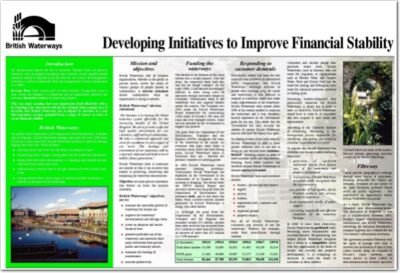Workforce engagement drivers are the various elements that influence an employee’s emotional commitment to their organisation and its goals. These drivers encompass a range of factors, including job satisfaction, recognition, opportunities for professional development, and the overall workplace culture. Essentially, they are the levers that organisations can pull to enhance the level of engagement among their employees.
When these drivers are effectively managed, they can lead to a more motivated workforce, which in turn can significantly impact productivity and retention rates. Understanding workforce engagement drivers is crucial for organisations aiming to foster a positive work environment. For instance, a study by Gallup revealed that employees who feel engaged are more likely to stay with their employer and contribute positively to the company’s objectives.
This highlights the importance of identifying and nurturing these drivers, as they serve as the foundation for building a committed and high-performing workforce. By focusing on these elements, organisations can create a culture that not only attracts talent but also retains it, ultimately leading to sustained success.
Summary
- Workforce engagement drivers are the factors that motivate and inspire employees to perform at their best, such as recognition, communication, and opportunities for growth.
- Workforce engagement is important as it leads to higher productivity, better customer service, and lower staff turnover, ultimately contributing to the success of the organisation.
- Factors affecting workforce engagement include job satisfaction, work-life balance, and the overall company culture and values.
- Strategies for improving workforce engagement include providing regular feedback, offering training and development opportunities, and creating a positive work environment.
- Leadership plays a crucial role in driving workforce engagement by setting a clear vision, communicating effectively, and leading by example.
Importance of Workforce Engagement
The significance of workforce engagement cannot be overstated, as it directly correlates with an organisation’s overall success. Engaged employees are more productive, innovative, and willing to go the extra mile for their organisation. They exhibit higher levels of job satisfaction, which translates into lower turnover rates and reduced recruitment costs.
Furthermore, engaged employees are often more aligned with the company’s vision and values, fostering a sense of belonging that enhances teamwork and collaboration. Moreover, workforce engagement plays a pivotal role in customer satisfaction. Employees who are emotionally invested in their work are more likely to provide exceptional service, leading to improved customer experiences.
This connection between employee engagement and customer satisfaction is supported by research from the Harvard Business Review, which found that companies with highly engaged employees outperform their competitors in terms of profitability and productivity. Therefore, prioritising workforce engagement is not merely a human resources initiative; it is a strategic imperative that can drive organisational success.
Factors Affecting Workforce Engagement

Several factors can significantly influence workforce engagement levels within an organisation. One of the most critical is the quality of leadership. Leaders who communicate effectively, provide clear direction, and demonstrate genuine care for their employees’ well-being tend to foster higher levels of engagement.
Conversely, poor leadership can lead to disengagement, as employees may feel undervalued or unsupported in their roles. Another important factor is the work environment itself. A positive workplace culture that promotes inclusivity, collaboration, and recognition can enhance employee morale and motivation.
For example, organisations that encourage open communication and feedback create an atmosphere where employees feel safe to express their ideas and concerns. Additionally, opportunities for professional development play a crucial role in engagement; employees who see a clear path for growth within their organisation are more likely to remain committed and engaged in their work.
Strategies for Improving Workforce Engagement
To enhance workforce engagement, organisations can implement a variety of strategies tailored to their unique culture and workforce needs. One effective approach is to establish regular feedback mechanisms, such as employee surveys or focus groups. These tools allow organisations to gauge employee sentiment and identify areas for improvement.
By actively seeking input from employees, organisations demonstrate that they value their opinions and are committed to making necessary changes. Another strategy involves recognising and rewarding employee contributions. Implementing recognition programmes that celebrate achievements—whether through formal awards or informal shout-outs—can significantly boost morale and motivation.
Additionally, providing opportunities for professional development through training programmes or mentorship initiatives can empower employees to take ownership of their career paths, further enhancing their engagement levels. By investing in their workforce in these ways, organisations can create a more engaged and motivated team.
The Role of Leadership in Driving Workforce Engagement
Leadership plays a fundamental role in shaping workforce engagement within an organisation. Effective leaders set the tone for the workplace culture and influence how employees perceive their roles and responsibilities. Leaders who exhibit transparency, integrity, and empathy foster trust among their teams, which is essential for cultivating an engaged workforce.
When employees feel that their leaders genuinely care about their well-being and professional growth, they are more likely to reciprocate with loyalty and commitment. Moreover, leaders must actively engage with their teams by encouraging open dialogue and soliciting feedback. This two-way communication not only helps leaders understand employee concerns but also empowers employees to take an active role in shaping their work environment.
For instance, leaders who regularly hold one-on-one meetings with team members can gain valuable insights into individual motivations and challenges, allowing them to tailor their approach to meet diverse needs. By prioritising engagement at all levels of leadership, organisations can create a culture where employees feel valued and motivated to contribute.
The Impact of Workforce Engagement on Organisational Performance

The relationship between workforce engagement and organisational performance is well-documented across various industries. Engaged employees tend to be more productive, resulting in higher output levels and improved quality of work. Research conducted by Gallup indicates that organisations with high levels of employee engagement experience 21% greater profitability compared to those with low engagement levels.
This correlation underscores the importance of fostering an engaged workforce as a means of driving business success. Furthermore, workforce engagement has a direct impact on innovation within an organisation. Employees who are engaged are more likely to contribute creative ideas and solutions, as they feel empowered to take risks and think outside the box.
This innovative spirit can lead to the development of new products or services that enhance competitive advantage in the marketplace. Additionally, engaged employees often act as brand ambassadors, promoting the organisation positively both internally and externally, which can further enhance its reputation and attract top talent.
Examples of Successful Workforce Engagement Initiatives
Numerous organisations have successfully implemented initiatives aimed at enhancing workforce engagement, demonstrating the effectiveness of targeted strategies. For instance, Google is renowned for its employee engagement practices, which include providing flexible work arrangements, opportunities for professional development, and a strong emphasis on workplace culture. The company’s commitment to fostering an inclusive environment has resulted in high levels of employee satisfaction and retention.
Another notable example is Salesforce, which has prioritised employee well-being through its “Ohana Culture.” This approach emphasises family-like support among employees and encourages collaboration across teams. Salesforce regularly conducts employee surveys to gather feedback on engagement levels and uses this data to inform its policies and practices. As a result of these initiatives, Salesforce has consistently ranked among the best places to work globally.
Measuring and Monitoring Workforce Engagement
To effectively manage workforce engagement, organisations must establish robust measurement and monitoring systems. Employee engagement surveys are one of the most common tools used to assess engagement levels within an organisation. These surveys typically include questions related to job satisfaction, recognition, communication, and opportunities for growth.
By analysing survey results over time, organisations can identify trends and areas requiring attention. In addition to surveys, organisations can utilise other methods such as focus groups or one-on-one interviews to gain deeper insights into employee experiences. Monitoring key performance indicators (KPIs) related to turnover rates, productivity levels, and employee absenteeism can also provide valuable information about engagement trends within the organisation.
By combining quantitative data from surveys with qualitative insights from discussions with employees, organisations can develop a comprehensive understanding of workforce engagement and implement targeted strategies for improvement. In conclusion, workforce engagement is a multifaceted concept influenced by various drivers that significantly impact organisational performance. By understanding these drivers and implementing effective strategies for improvement—particularly through strong leadership—organisations can cultivate a highly engaged workforce that contributes positively to overall success.
The examples of successful initiatives from leading companies further illustrate the potential benefits of prioritising employee engagement as a core organisational strategy.
One interesting article related to workforce engagement drivers can be found on businesscasestudies.co.uk. This article discusses the strategies and challenges involved in growing a company through international acquisition. Understanding how to effectively integrate new teams and cultures can be a key driver of employee engagement and productivity within a global organisation. By learning from successful case studies, businesses can implement best practices to ensure a smooth transition and maintain high levels of workforce engagement.
FAQs
What are workforce engagement drivers?
Workforce engagement drivers are the factors that motivate and inspire employees to be fully committed and involved in their work and the success of the organisation.
What are some common workforce engagement drivers?
Common workforce engagement drivers include effective leadership, opportunities for career development, a positive work environment, recognition and rewards, and a sense of purpose and alignment with the organisation’s values.
How do workforce engagement drivers impact an organisation?
Workforce engagement drivers have a significant impact on an organisation’s performance, productivity, employee retention, and overall success. Engaged employees are more likely to be motivated, innovative, and committed to achieving the organisation’s goals.
How can organisations identify and address workforce engagement drivers?
Organisations can identify workforce engagement drivers through employee surveys, feedback mechanisms, and regular communication with employees. Once identified, organisations can address these drivers by implementing strategies such as leadership development, training and development programmes, and creating a positive and inclusive work culture.
What are the benefits of focusing on workforce engagement drivers?
Focusing on workforce engagement drivers can lead to improved employee satisfaction, higher levels of productivity, reduced turnover, and a more positive organisational culture. Ultimately, it can contribute to the overall success and competitiveness of the organisation.
 Developing initiatives to improve financial stability (PDF)
Developing initiatives to improve financial stability (PDF)  Recruitment and selection at Enterprise Rent-A-Car (MP3)
Recruitment and selection at Enterprise Rent-A-Car (MP3) 